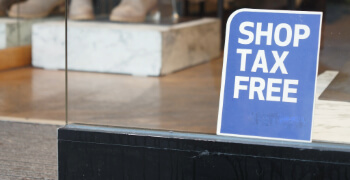Australia’s tampon tax is dead
Australia is making headlines for eliminating its tampon tax. It’s been a long time coming.
Australia adopted a Goods and Services Tax, or GST, in July 2000. At the time, and despite some resistance, tampons and other feminine hygiene products made the list of taxable items along with most goods and services. This has been a source of contention ever since.
To be fair, few people enjoy paying taxes on anything. When the GST was first adopted and criticized for including feminine hygiene products, then health minister Michael Wooldridge quipped, “As a bloke, I’d like shaving cream exempt but I’m not expecting it to be.” Critics of the tax on tampons were not amused.
Many in Australia were quick to point out that certain male-oriented products — notably condoms — were exempt from Australia’s GST. Mr. Wooldridge’s response? “Condoms prevent illness. I wasn’t aware that menstruation was an illness.”
That was a bit disingenuous, given the fact that Australia exempts other medical and health products. For example, disposable/reusable continence pads, pants, and nappies required for continence use are exempt from Australia’s GST. On the other hand, along with sanitary pads and tampons, “nappies for babies” are taxable.
Calls to revoke the tax on feminine hygiene products have intensified in recent years, in Australia and elsewhere. In 2015, an Australian university student renewed awareness of the issue with an online petition and a widely circulated video featuring a giant tampon. Shortly thereafter, then treasurer Joe Hockey agreed that “sanitary products are an essential health product for half of the population,” and that they “probably should” be exempt.
Then prime minister Tony Abbott pointed out that the GST is the purview of the states, not his government. He said that his government would “be happy to be accommodating … if the states decide that they’d prefer to forego the revenue.” At the time, the states seemed content to let the tax stand.
For years, in fact, the federal government has insisted the matter was in the hands of the states. In May 2018, finance minister Mathias Cormann said exempting tampons from the GST was “moot because the states and territories don’t support it.” He reiterated the point in early August, saying “We have put that proposition to the States. The States rejected it. If the States want to revisit that issue that is going to be a matter for them.”
Senator Janet Rice took a different position in introducing the Axe the Tampon Tax Act of 2018 earlier this year. She said, “The legislation to impose the GST on sanitary items was made federally, and the federal parliament can lead the way and fix it.” Sure enough. Josh Frydenberg, Australia’s new treasurer, has now made a deal with the states and territories to exempt it.
Last week, representatives of the states and territories agreed to exempt feminine hygiene products from the GST. The exemption will take effect on January 1, 2019, and cost states approximately $21.5 million (A$30 million) each year. In so doing Australia joins a growing list of countries (e.g., Canada, Ireland, and Malaysia) and American states (e.g., Connecticut, Florida, Illinois, Maryland, New York, and Washington, D.C.) that exempt these goods.
Learn more about the GST in Australia.

Avalara Tax Changes 2026 is here
The 10th edition of our annual report engagingly breaks down key policies related to sales tax, tariffs, and VAT.
Stay up to date
Sign up for our free newsletter and stay up to date with the latest tax news.















